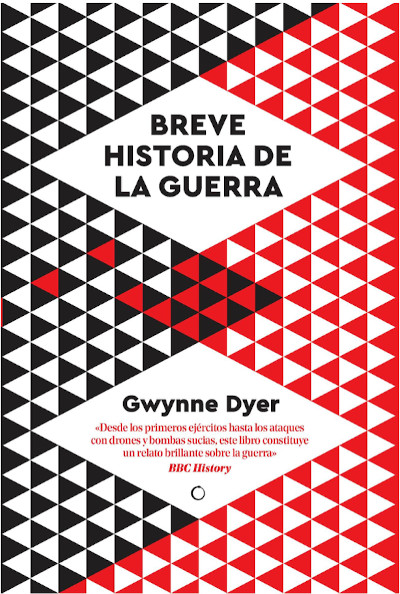In the picture
Cover of Gwynne Dyer's book 'A Brief History of War' (Barcelona: Antoni Bosch, 2021) 247 pages.
Since at least 1274 B.C., the date of the battle of Qadesh, the first documented battle in history, countless titles have been dedicated to war, seen from every conceivable point of view. The list of authors who have written about it is long, and after contributions such as those of Sun-Tzu, Vegetius, Machiavelli, Clausewitz, or Jomini, it is difficult to find contributions that add something substantial and novel.
It cannot be said that 'Brief History of War' is a revolutionary degree scroll . However, it is an attractive compendium of some of the issues core topic in the historical evolution of the war phenomenon that, avoiding any pretension of academic depth subject , financial aid to understand it to any reader. And it does so in an attractive and simple way, skillfully relying on graphs and charts to complement a carefully chosen text.
The effort of synthesis, perhaps one of the most notable merits of this book, denotes the deep and broad knowledge that the author treasures about the subject, which allows him to distill the essential from the accessory to draw a picture of the evolution of war that does not stop at making a mere chronology, but delves into the ideas underlying the phenomenon and its historical transformation.
The initial, conceptual chapters are particularly interesting. In them, Dyer addresses recurring questions in the study of war, such as its innate or learned character, which he resolves by relying on Chagnon's programs of study on the Yanomami of Brazil, or on Jane Goodall's on chimpanzees, concluding that our human nature carries within itself the germ of war; or the origin of human aggressiveness as a predatory species organized in groups of variable size, and in which he sees, without being categorical, a possible evolutionary strategy put in internship by certain human groups to survive in times of insufficient food resources and, therefore, to transmit their genes to subsequent generations; or, finally, the nature of combat as the ultimate embodiment of this aggressiveness.
In the part dedicated to the historical evolution of the war -obviously, the most extensive- the book adopts a chronological outline in very broadly defined historical blocks, in which it identifies elements of continuity and, above all, differentiators, which justify speaking of different periods.
From the pre-classic period -dominated by hydraulic societies-, for example, it is noteworthy how the social organization favored by agricultural production evolved to give rise to the walling of cities, or to the organization of the phalanx as the most efficient form of combat.
It is the phalanx, precisely, the element that bridges the gap between the pre-classical and classical forms of warfare, since this subject of training remained for centuries as the preferred, and almost unique, form of combat; adopted by the Greeks and also by the Romans, who applied adaptations to make it more flexible, while maintaining essentially the same technique, so that, as the author points out, "an army of 500 BC, well prepared with capable commanders, could talk on equal terms with an army of similar size of 1400 AD".
After the hiatus of the Age average, based on the predominance of cavalry, the author makes a transition to the period between the 15th century and the French Revolution, characterized by the return of infantry to the rank of main element in combat; by the introduction of firearms; and by the extensive employment of mercenaries. At that time there was also the resource to limited wars that avoided massacres such as the Thirty Years' War but which, in spite of everything, ended up deriving, in a natural way, in wider and wider conflicts that reached their maximum expression in the Napoleonic era, propitiated by the mass armies made possible by the French Revolution.
This long period gives entrance in the work to another dominated by the irruption of modern technology, which had its prelude in the American Civil War, its emergence on the battlefields of the First World War, and its total development in the Second; and that culminated with the advent of the weapon that forever transformed modern warfare: the atomic bomb. It is the period of "total war" in which the nation-states mobilized all their powers to put them at the service of war objectives.
With the advent of nuclear weapons, humanity enters a period in which three forms of warfare coexist - nuclear, highly technological conventional and irregular - and in which it must face new challenges such as global warming, the rise of new actors to the rank of global power, or the proliferation of weapons of mass destruction; challenges that, in the author's opinion, must be confronted in a cooperative manner, supported by international organizations, to eliminate once and for all the old institution of war.
Despite its recent publication, the book does not account for the events that Russia unleashed in February 2022, and which call into question its assertion that, at the dawn of the 21st century, "traditional 'conventional' warfare seems to be in decline, while there has been a golden age of guerrilla warfare and terrorism". Open to further editing, therefore, is the question of whether this war is an exception that confirms the rule of this announced decline or whether, on the contrary, we are witnessing a return to past forms of warfare that were thought to have been overcome.

